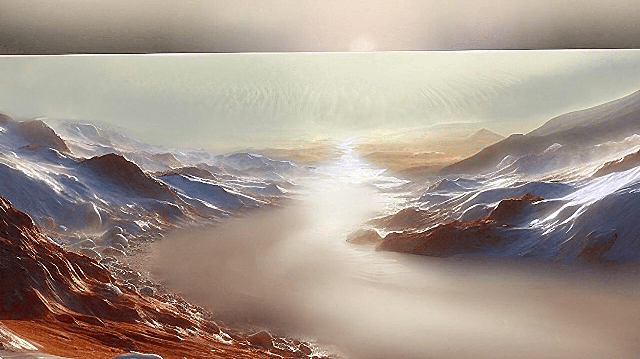Planetologists have discovered why rivers and lakes existed on cold Mars.
It has become evident, upon detailed examination of the planet's surface, that Mars once had seas, rivers, and lakes; for instance, meandering, extensive former riverbeds are connected to the Jezero crater. This is why the Perseverance rover was sent there.
In general, landing sites for spacecraft on Mars are chosen from regions that belong to the most fortunate period in the planet's history—the Noachian. This era is named after Noah's Earth, characterized by cratered highlands in the southern hemisphere. These features have remained unchanged since those ancient times, roughly four billion years ago.
At that time, the Red Planet had such a dense atmosphere that, according to scientists, it likely experienced rainfall. However, this era of prosperity came to an end approximately 3.6 billion years ago, and Mars gradually began to evolve into the planet we observe today. Researchers suspect that around this time, the tilt of Mars's rotational axis decreased significantly, which greatly affects the climate: a greater tilt warms the poles, making the planet warmer and wetter, whereas a smaller tilt results in a drier and colder environment.
Regardless, at the boundary between the Noachian and the subsequent Hesperian period, most of Mars's water froze and became part of the southern polar ice cap, explained leading researcher Peter Buehler from the Planetary Institute in the USA in a recent article for Journal of Geophysical Research: Planets. According to him, at the same time, carbon dioxide began to escape from the atmosphere.
Amid all of this, an interesting paradox emerges: many river valleys formed precisely during that time. To explain this, scientists tried to "invent" some sudden global warming event. Now, there is a chance to address the issue without any unexpected occurrences: a planetary scientist suggested that frozen carbon dioxide "protected" Martian water for a period.

According to the scientist's calculations, this "dry ice" covered the polar cap with a layer more than 600 meters thick and effectively "wrapped" it like frost with snow: it blocked heat escape from the planet's interior and additionally exerted pressure with its weight. Modeling of this process showed that as a result, about half of the Martian ice melted beneath the heavy blanket, forming large hidden reservoirs.
Subsequently, in some areas, these subglacial waters began to seep to the surface, gradually carving their way through, becoming covered with ice along the way, yet still forming rivers extending approximately a thousand kilometers. When they reached the Ager Plain (a giant dent from an asteroid impact), a lake the size of the Mediterranean Sea emerged within it.